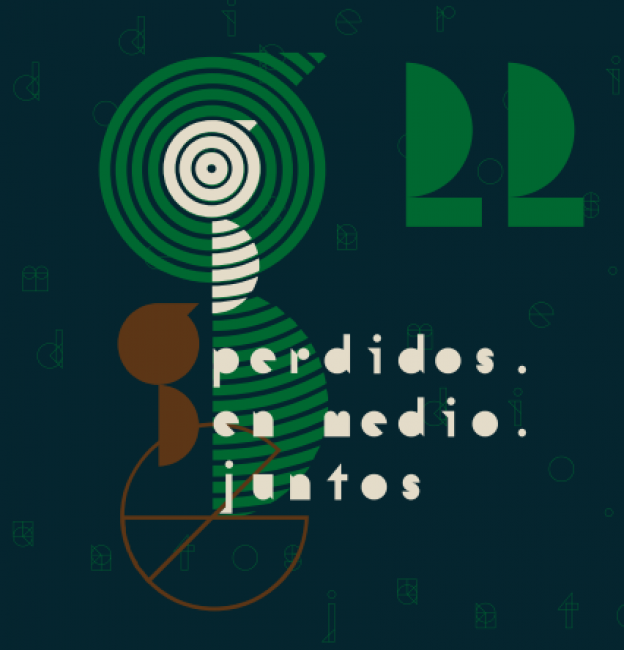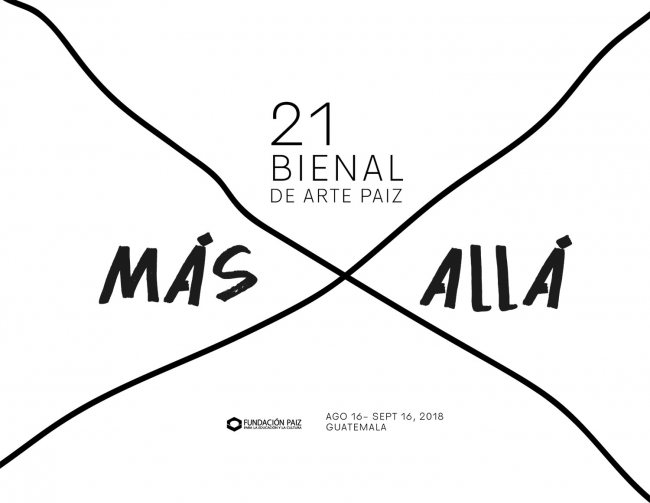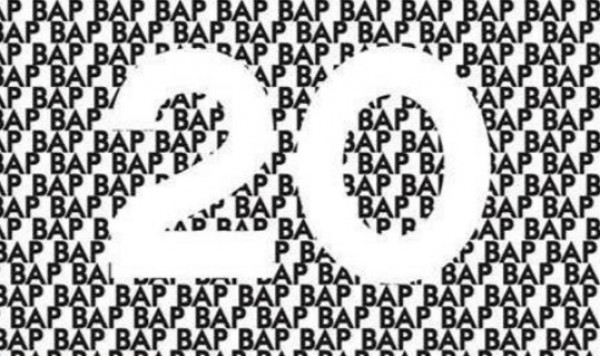Descripción de la Exposición
Fundación Paiz para la Educación y la Cultura presenta la XXIII Bienal de Arte Paiz. Del 13 al 30 de julio, se exhiben más de 130 piezas de 30 artistas y colectivos de Guatemala, Argentina, Guadalupe (Francia), Brasil, Chile, Colombia, Costa Rica, Cuba, España, Estados Unidos, Haití, República Dominicana y Panamá.
Para definir el título del proyecto, el equipo curatorial, conformado por Francine Birbragher-Rozencwaig y Juan Canela, se inspiró en un fragmento del poema Nací mujer, de la escritora guatemalteca, Maya Cú.
Desde el 30 de marzo, la Bienal estuvo acompañada del Programa educativo Saberes compartidos, curado por Esperanza de León. En él se despliega un plan de recursos de mediación pensados para introducir la bienal en un desplazamiento gradual que, de menor a mayor complejidad, acerquen las temáticas de la misma a los públicos.
Participan más de 30 artistas y colectivos
Carolina Alvarado (MEX-GUA); Margarita Azurdia (GUA); Minia Biabiany (GLP); Marilyn Boror Bor (GUA); Zoila Andrea Coc-Chang (GUA-USA); Josué Castro (GUA); Roberto Escobar Raguay (GUA); Laia Estruch (ESP); Adler Guerrier (HTI-USA); Colectivo Ixqcrear - Elena Caal Hub, Ixmukane Quib Caal e Ixmayab’ Quib Caal - (GUA); Yavheni de León (GUA); Ana Mendieta (CUB-USA); Fina Miralles (ESP); Helen Mirra (USA); Julieth Morales (COL); Verónica Navas González (CRI); María Thereza Negreiros (BRA-COL); La Nueva Cultura Material - Bryan Castro y Valeria Leiva-(GUA); Itziar Okariz (ESP); Eliazar Ortiz Roa (DOM); Lourdes de la Riva (GUA); Sallisa Rosa (BRA); Duen Neka'hen Sacchi (ARG); Ix Shells (PAN); Colectivo Tz´aqol - Victor Manuel Barillas y Marta Tuyuc - (GUA); Colectivo Tz’aqaat - Cheen (Cortez) y Manuel Chavajay (GUA); Juana Valdés (CUB-USA); Cecilia Vicuña (CHL); Martín Wannam (GUA- USA); Risseth Yangüez Singh (PAN).
Distingue esta edición un entramado en conjunto en el cual los temas, ideas, participantes y estructura fueron parte de un proceso de trabajo colectivo junto a una Asamblea curatorial conformada por artistas participantes: Minia Biabiany (Guadalupe); Marilyn Boror Bor (Guatemala); Duen Neka'hen Sacchi (Argentina); y Juana Valdés (Cuba-Estados Unidos). Además, se destaca el trabajo de cinco mujeres artistas pioneras, quienes abrieron caminos y se convierten en inspiración, anclaje y punto de partida de la Bienal: Margarita Azurdia, Ana Mendieta, Fina Miralles, María Thereza Negreiros y Cecilia Vicuña.
---------------------------
---------------------------
23rd Bienal de Arte Paiz, Guatemala
I drank words submerged in dreams
Opening dates: Guatemala City, July 13, and Antigua Guatemala, July 15
Curators: Francine Birbragher-Rozencwaig and Juan Canela
Shared Knowledge Program: Esperanza de León
Curatorial assembly: Minia Biabiany (Guadeloupe); Marilyn Boror Bor (Guatemala); Duen Sacchi (Argentina); Juana Valdés (US)
Artists: Carolina Alvarado (Guatemala); Margarita Azurdia (Guatemala); Minia Biabiany (Guadeloupe); Marilyn Boror Bor (Guatemala); Zoila Andrea Coc-Chang (Guatemala-U.S.); Josué Castro (Guatemala); Tz’aqaat—Cheen Cortez & Manuel Chavajay (Guatemala); Roberto Benjamín Escobar (Guatemala); Laia Estruch (Spain); Adler Guerrier (Haití-U.S.); Colectivo Ixcrear—Elena Caal, Ixmukane & Ixmayab Quib (Guatemala); Yavheni de León (Guatemala); Ana Mendieta (Cuba-U.S.); Fina Miralles (Spain); Helen Mirra (U.S.); Julieth Morales (Colombia); Verónica Navas González (Costa Rica); María Thereza Negreiros (Brazil-Colombia); La Nueva Cultura Material—Bryan Castro & Valeria Leiva (Guatemala); Itziar Okaritz (Spain); Eliazar Ortiz Roa (Dominican Republic); Sallisa Rosa (Brazil); Colectivo Tzaquol-Víctor Manuel Barillas & Marta Guadalupe Tuyuc Us (Guatemala); Lourdes de la Riva (Guatemala); Duen Sacchi (Argentina); Cecilia Vicuña (Chile); Juana Valdés (Cuba-U.S.); Martin Wannam (Guatemala-U.S.); Risseth Yangüez Singh (Panamá); Itzel Yard (Panama)
bebí palabras sumergidas en sueños (I drank words submerged in dreams) is a fragment of a poem by Maya Cú, one of the referents of Mayan poetry in Guatemala, whose body of work represents the search for identity establishing a feminine genealogy and a heritage in resistance. Her verses accompany the construction of this project, whose themes, ideas, participants, and structure have been taking shape in a collective work process with a curatorial assembly convened by Francine Birbragher-Rozencwaig and Juan Canela and formed together with Minia Biabiany, Marilyn Boror Bor, Duen Sacchi, and Juana Valdes. The conversations and meetings have been braided around the existing links between language, body, and territory since the first shared intuitions. Writing, orality, story, corporality, presence, movement, community, territoriality, landscape, nature, and community are some concepts that emerge from these relationships, articulating narratives that challenge hegemonic stories and imagining futures that delve into the possibilities of lives in common.
The project is built from a polyphony of voices that emerge from the dialogue with the participating artists and the reflections that emanate from their work. These voices and gestures emerge from different territories and evolve while experimenting with what is close to articulate meeting spaces. There is an unequivocal will to work from undefined certainties born from intuitive spaces and diverse spiritualities.
The exhibited works, displayed in different venues in Guatemala City and Antigua, delve into linguistic, poetic, dreamlike, telluric, political, psychic, emotional, or affective territories in which materialities, subjectivities, and subjectivities, and desires take shape from the conviction of building bridges. The works by five pioneering women artists serve as an inspiration, anchor, and starting point for the biennial’s development. The practices of Margarita Azurdia, Ana Mendieta, Fina Miralles, Maria Terezha Negreiros, and Cecilia Vicuña opened paths at the time that many of us have followed since. Paths cleared many times using words, spoken or written. Words emerge from the depths of being and delve into the essential relationships with the bodies and the world surrounding them.
In addition to the works presented in the exhibition, the biennial features a Shared Knowledge Program curated by Esperanza de León. It offers mediation resources designed to gradually introduce its themes, bringing them closer to the public and expanding the biennial’s temporality. These pedagogical and discursive formats are born from the meeting of knowledge and complementary cognizance and invite the general public, local artists, and specific communities to participate. Given the need to think about this type of mediation activities before the exhibition’s opening, the program began in March, allowing audiences to meet early on and understand the biennial as a project whose complexity responds to different formats, intensities, vibrations, and actions.
In these days of global societies’ climatic, social, and structural crises, embracing broad listening, attentive gaze, close attention, and radical tenderness is essential. May the dreamy sips of each language remind us of the words of our grandmothers and honor our ancestors to imagine a shared future capable of weaving one with the other.
*The project’s title is a verse belonging to the poem Nací mujer (I Was Born a Woman) by writer and poet Maya Cú.

Exposición. 06 may de 2021 - 06 jun de 2021 / Varios espacios en Ciudad de Guatemala y Antigua Guatemala / Guatemala City, Guatemala, Guatemala

Exposición. 16 ago de 2018 - 16 sep de 2018 / Fundación Paiz para la Educación y la Cultura / Ciudad de Guatemala, Guatemala, Guatemala

Exposición. 04 jun de 2016 - 03 jul de 2016 / Fundación Paiz para la Educación y la Cultura / Ciudad de Guatemala, Guatemala, Guatemala
Ver los 5 eventos relacionados

Formación. 08 may de 2025 - 17 may de 2025 / Museo Nacional Centro de Arte Reina Sofía (MNCARS) / Madrid, España